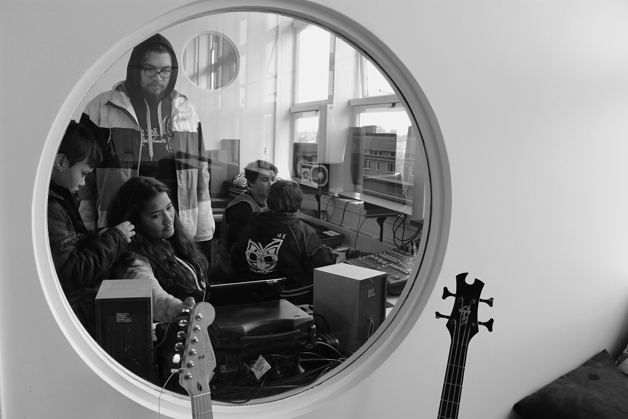Te Ao o te Māori
Oct 7, 2015

A window into the rich lifestyles of contemporary Māori
Photographs and words nā Phil Tumataroa

It’s lunch time. Tamariki excitedly form a line.
Since 8am, Makere Kupenga and Sharlene Waata-Pirikahu and have been working in the kitchen at Te Pā o Rākaihautū, preparing kai for its 140 students and 21 staff. Chicken drumsticks on rice with two salads to choose from, and a carton of chilled milk, or water. Te Pā o Rākaihautū is a newly established special character Yr 1 -13 state school, based in Ōtautahi, that caters for the whole whānau from early childhood through to tertiary on one site.
Thirty-odd five-to-seven-year-olds have just finished their reading lesson. It’s their second visit to the wharekai today, having shared breakfast together at the start of the day. Once these tamariki have had their kai and cleaned up after themselves, the older kids from Waimarie Puna Karikari (Yr 7-10) will be in for lunch.
The youngest members of the Te Pā learning village attend Nōku Te Ao; the early childhood kura established in 2002 which has pioneered the way for the establishment of Te Pā. There are 20 under-fives enrolled at Te Pā, but today they are out in the community, where learning often takes place.
Nōku Te Ao was the “incubator”, says Tauira Takurua, the Kaiurungi of Te Pā. “Te Pā has grown from that whole concept. Whānau wanted somewhere to go after Nōku Te Ao. Now we have been able to create a pā wānanga, a learning village.”
Rākaihautū is the ancestor of Waitaha and he shaped Te Waipounamu landscapes with his kō – his digging stick. “Rāikaihautū represents the qualities of what we want to encourage in our whānau – take up your kō and carve out your own future,” says Takurua.